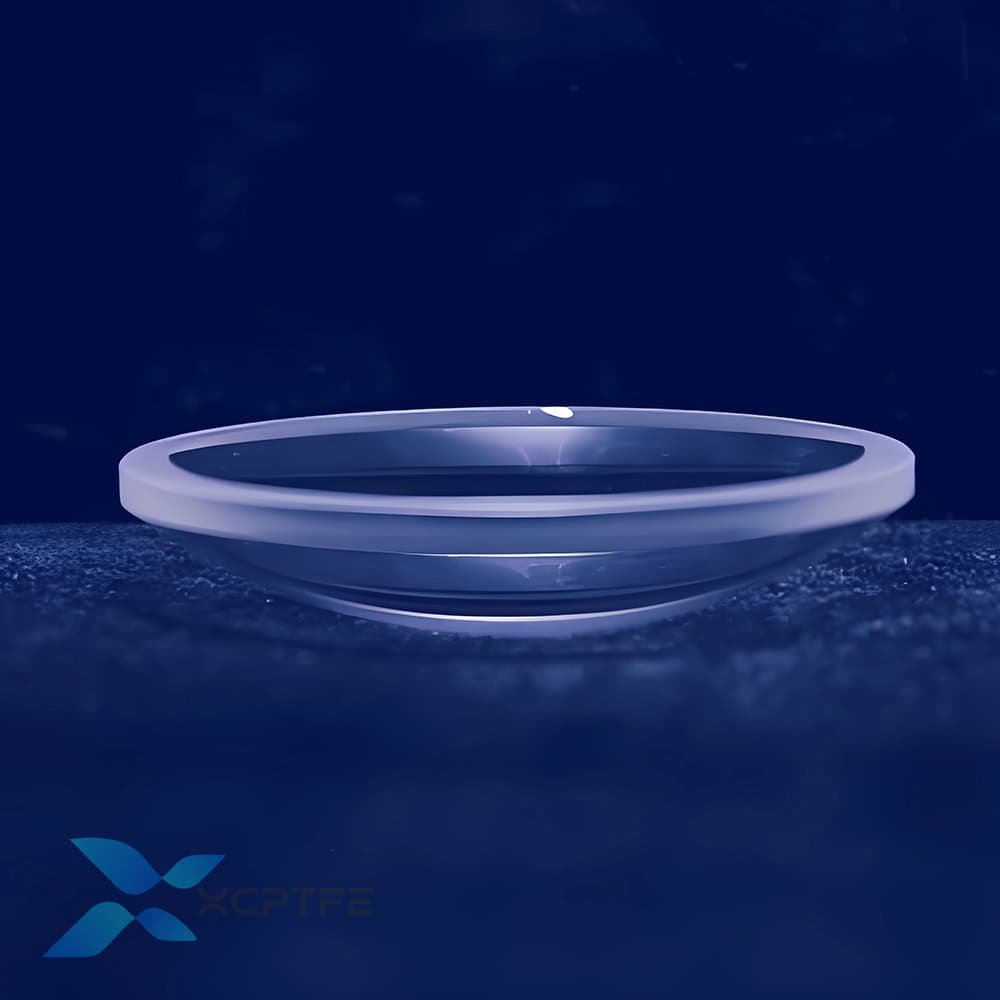Meniscus Lens
Custom Fabrication
Custom Fabrication
Any question you want to know, just to contact email: cusoptics@micquartz.com.
What is Meniscus Lens?

A meniscus lens is a uniquely shaped lens with two curved surfaces, one convex and the other concave, resembling a crescent moon (Meniscus originally meaning crescent moon). Depending on the curvature, it can be either a converging lens or a diverging lens.
Features
Shape: Having both a convex surface and a concave surface. This is its most prominent feature. According to the relationship between the curvature radii of two surfaces, they can be divided into two basic types:
Positive crescent lens (converging): The curvature radius of the convex surface is smaller than that of the concave surface (i.e. more curved), and the overall center thickness is greater than the edge thickness. It has a positive focal length.
Negative crescent lens (divergent): The curvature radius of the concave surface is smaller than that of the convex surface (i.e. more curved), and the overall center thickness is smaller than the edge thickness. It has a negative focal length.
How does Meniscus Lens work?
The core value of a meniscus lens is not primarily for individual imaging or significant convergence/divergence of light rays, but for correcting aberrations in optical systems, especially spherical aberration.
Aberration correction: In complex optical systems such as camera lens groups, using a meniscus lens in conjunction with other lenses such as a biconvex lens can effectively reduce or even eliminate spherical aberration, thereby significantly improving the imaging quality of the entire system. It is one of the earliest techniques used to correct spherical aberration.
Optical path control: It can slightly converge or diverge light rays, but is more often used to “bend” the optical path to adapt to the system structure without significantly changing the convergence properties of light rays.
Application
The meniscus lens is almost never used alone and is always a key correction element in a composite lens group.
Photography lens: It is an indispensable component in modern camera lens design. Almost all high-quality optical lens assemblies contain at least one meniscus lens used to correct aberrations caused by other lenses.
Telescopes and microscopes: used in these high-precision imaging instruments to improve resolution and image clarity.
Laser optical system: used for shaping and aberration correction of laser beams.
Glasses: commonly used in the lens design of myopia or hyperopia glasses. Many prescription lenses adopt a crescent shaped design to provide a thinner, lighter, and visually less distorted wearing experience.
Advantages & Limitations
Advantage:
Excellent aberration correction capability is the primary reason for its existence, which can greatly enhance the performance of complex optical systems.
Design flexibility: Provides optical engineers with two curved surfaces as variables, allowing for more precise adjustment and optimization of the optical path.
Limitations:
Not used alone: When used alone, the optical performance (such as imaging or focusing ability) is usually inferior to that of a biconvex or plano convex lens, and its value is reflected in the combination.
Complex design and manufacturing: As a part of the system, its design requires complex calculations; Manufacturing also requires high precision to match design parameters.
Send Us A Message

